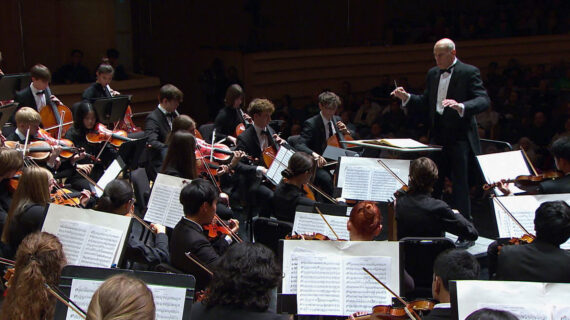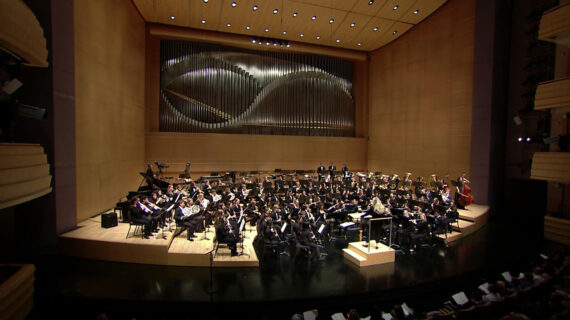Frederica Freyberg:
Just what impact would the Foxconn project have on local government? In tonight’s Closer Look, we dive into that with Todd Berry from the Wisconsin Taxpayers Alliance, who has been asking that question in recent days. Todd, thank you very much for being here.
Todd Berry:
Thank you. Yes and we have a little blog post on our website on this subject.
Frederica Freyberg:
Right. In fact I read it. That’s why we invite you here today to talk about this really important stuff. But I wanted to ask you ahead of that local discussion about your overall reaction to this $3 billion incentive package and specifically the part of it that at its peak would cost the state of Wisconsin $600 million over a two year budget cycle in 2022. What does that do to state budget writers?
Todd Berry:
First of all you have this long Fiscal Bureau memo that talks about all this. And when you get into it, you find out that it’s all based on assumptions that the Fiscal Bureau accepted from other outside parties. So it really is questionable. That’s not meant to be a criticism of the Fiscal Bureau. As far as the impact, we get $1.5 billion, $2 billion dollars a year in a biennium of new revenue. $600 million is manageable, but how do they manage it? I would look back to 2014-15 when the state threw a lot of money at technical college property taxes. And it was actually more money than this Foxconn thing. What happened? They basically just screwed down the entire state budget and all the new money went there or to Medicaid. And that’s probably what would happen.
Frederica Freyberg:
Let’s move along to the local impact. Wherever Foxconn locates, it would be inside a local Tax Incremental Finance district. What does that afford the company?
Todd Berry:
The idea behind TIF, and it was originally meant for disturbed, blighted urban areas– and this would probably be on farmland– but what it does is it says the municipality can issue debt in order to cover the costs of improvements like roads and sewer and so forth. And because of the scale of this thing, when we’re talking about roads, we may be talking about four-lane highways for miles. Just the whole–parking lots, whatever. It’s just huge.
Frederica Freyberg:
The Fiscal Bureau, though, says these public service costs, like that of which you speak, would not be recouped from Foxconn because of this TIF district, but instead shifted to other property outside the TIF district.
Todd Berry:
There’s a couple things going on there. Foxconn is going to pay property taxes. And because the increment, the amount of increased property taxes will be because of all this borrowing and development, Foxconn will share in those costs. And because it will be such a large part of the tax base of the community, they are going to pay something. They are not going to be exempt from property taxes.
Frederica Freyberg:
How complicated is it for local governments to implement a TIF district? What concerns are there, considering the fast track nature of this whole thing?
Todd Berry:
I think that’s a great question. And it’s part of what was on our website. There’s a certain due diligence and process to all of this. Local governments probably hire a consultant. They have to design the district. And there are hearings and meetings and local government boards have to do the approval and so forth. If the state is assuming they can get this through the legislature in the next 30 to 60 days, nobody really has given much thought to how fast can local governments do this. And besides just the normal TIF process, if this is done in a rural town that has limited TIF authority, you probably will have part of the town and next to a village or city, and so then you have all the annexation issues. And there’s nothing like local annexation issues to stir up the troops.
Frederica Freyberg:
Does this whole thing, bottom line, help or hurt local governments?
Todd Berry:
Well, long run, if the TIF works the way it is and Foxconn works the way it’s supposed to, you end up with a lot more property value to tax whatever the TIF has done. And that windfall will fall to not only the municipality but the schools and the counties. Perfect example is Epic in the Madison area, where their TIF ended and suddenly there’s a lot of new value to tax by the local governments.
Frederica Freyberg:
Thirty years out, though, in this one, right?
Todd Berry:
That’s another great question because rhetorically the way to answer that is suppose we had decided to build a manufacturing plant to make landline phones 30 years ago. Technology changes.
Frederica Freyberg:
Thirty years is a long time.
Todd Berry:
Yeah.
Frederica Freyberg:
Todd Berry, thanks very much.
Todd Berry:
You’re very welcome.
Search Episodes
Related Stories from PBS Wisconsin's Blog

Donate to sign up. Activate and sign in to Passport. It's that easy to help PBS Wisconsin serve your community through media that educates, inspires, and entertains.
Make your membership gift today
Only for new users: Activate Passport using your code or email address
Already a member?
Look up my account
Need some help? Go to FAQ or visit PBS Passport Help
Need help accessing PBS Wisconsin anywhere?

Online Access | Platform & Device Access | Cable or Satellite Access | Over-The-Air Access
Visit Access Guide
Need help accessing PBS Wisconsin anywhere?

Visit Our
Live TV Access Guide
Online AccessPlatform & Device Access
Cable or Satellite Access
Over-The-Air Access
Visit Access Guide
 Passport
Passport








Follow Us